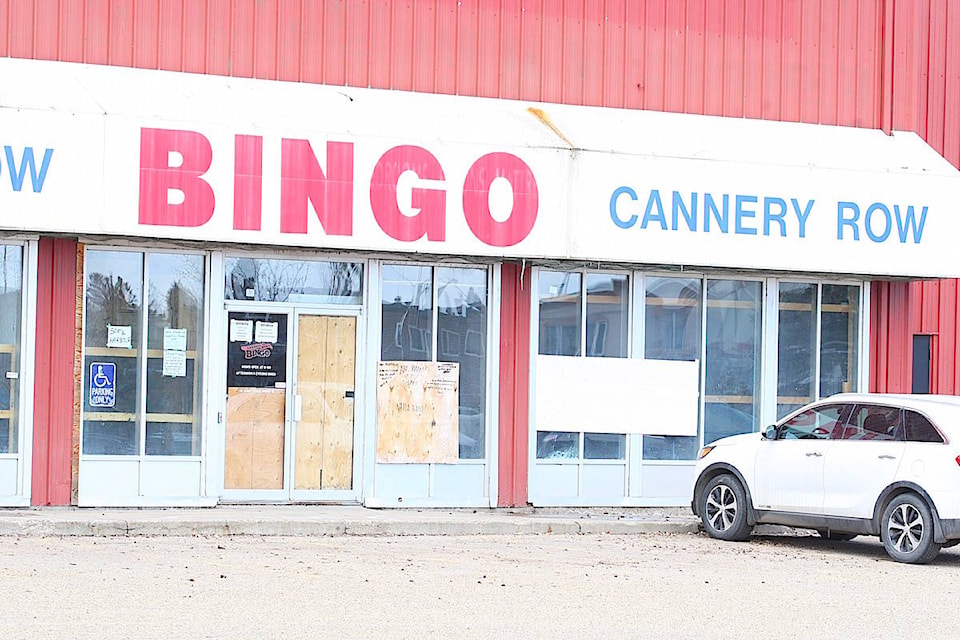Red Deer’s temporary homeless shelter was linked to downtown crime and debris — or praised as a vital link in a life-saving chain — at a public hearing on Tuesday.
Dr. Thara Kumar was one of the few who spoke before city council without a polarized viewpoint. The local emergency physician and medical officer of health in the region, told councillors she doesn’t believe in a business-versus-shelter situation — it’s possible to co-exist.
Other communities, including Ottawa, manage to retain homeless shelters at their cores while still maintaining a thriving nearby tourist and consumer area, said Kumar, who believes the answer lies how shelter services are delivered.
She said the consolidation of meals, addictions treatment, overdose prevention, mental health counselling and housing supports into one shelter building helps clients out of the same spot and prevents them from having to move through the community.
This concept will, at least in part, be provided by the permanent homeless shelter, which is to be built in Red Deer with “wrap-around services” in two to three years.
But city council held the public hearing on Tuesday to learn where community members want the temporary homeless shelter to be located — before the permanent $7-million shelter can be built and opened. The temporary location was opened in the former Cannery Row Bingo site after the pandemic started a year ago. Many downtown businesses and residents don’t want it’s zoning to be extended at that site.
But Kumar was among those who were for keeping the homeless shelter, operated by Safe Harbour, downtown. Moving the shelter won’t solve Red Deer’s downtown problems, she said, as shelter clients will still be drawn daily to the city’s core because this is where their other services are.
Red Deer city council heard about four hours of phone calls, then read 170 pages of last minute letters that were sent — on top of 1,500 responses received before the meeting from downtown businesses and residents, the medical community and social agencies, shelter officials, and the general population.
A series of downtown business owners asked council for the same consideration that’s being extended to vulnerable shelter clients. Many stressed they are not heartless, just tired of having to deal with the brunt of the city’s social problems while they are hiring people, paying taxes and adding to the local economy.
“Where is the sympathy for us?” said Chung Mah, owner of a six-decade-old downtown business, Wei’s Western Wear. He added he’s constantly seeing businesses smashed, defaced and littered with garbage and debris. “It’s too much. Our rights are being trampled…. We’ve done nothing wrong, yet we have this poisoned pill shoved down our throats…
“We’re the last bastion of the downtown business people,” added Mah, who named a list of lawyers and accountants and banks that have moved away. “We need some help too — we are kind of drowning here.”
Officials from social service agencies, including the Canadian Mental Health Association and Turning Point, which runs the overdose prevention site, spoke of not being able to function as well without the shelter nearby.
CMHA executive-director Christine Stewart and Turning Point’s executive-director Stacey Carmichael said whenever they have problem clients they can’t help, or deal with, the shelter is always willing and able to provide for them.
“If you move the shelter out of the area you will now be creating a longer migration path” for shelter clients, said Carmichael.
Stewart stressed that while not all homeless people are criminals, most have mental health problems that can drive negative behaviour.
Kath Hoffman, executive-director of Safe Harbour, told council she feels for impacted businesses. She also knows all about the repeat problems since some broken windows, doors and fences have even been on Safe Harbour’s own facilities.
Hoffman said her clients are much sicker than a decade ago, their minds clouded by harder drugs. Many simply don’t have the capacity to understand the impact of their negative behaviours.
“I know they have the desire, and the shame is there,” she added — but until they get to the point where they want to get off drugs and improve their lives, they will be in a “limited” state of intoxication or withdrawal.
She stressed that shelter stays are meant to be temporary — until clients can get help and into more stable housing — but the location of the shelter is not supposed to be. Hoffman wants to stay at the same downtown site until a permanent shelter is built.
She told council she picks up debris around the shelter daily and her staff are always willing to come and help if called.
She does not believe the new fencing recommendation, suggested by city administrators, will be helpful as people can’t have their movements corralled once they leave the shelter.
Red Deer city council opted to debate the matter on Wednesday because of the late hour.
lmichelin@reddeeradvocate.com
Like us on Facebook and follow us on Twitter
